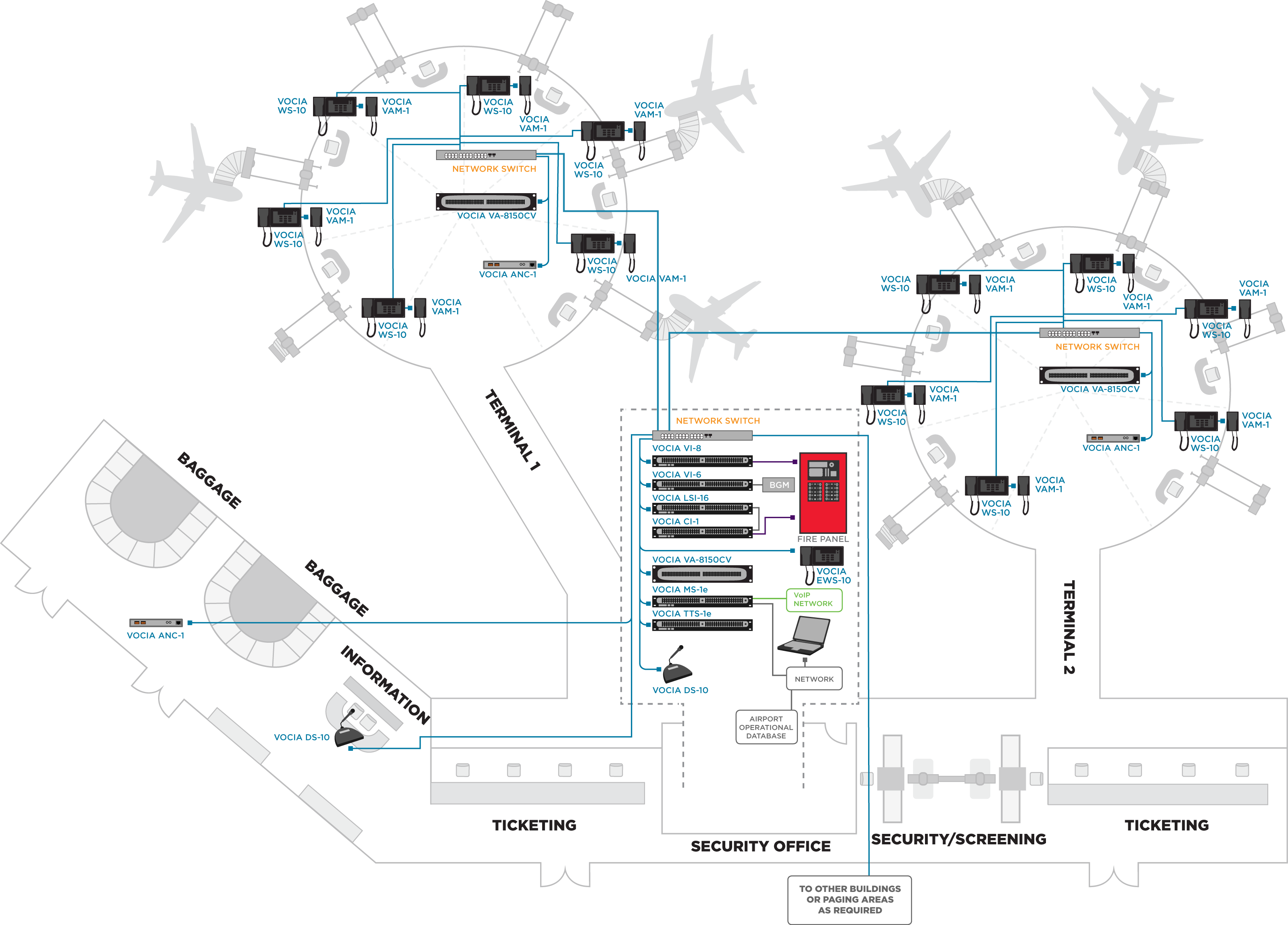As major airports grapple with unprecedented passenger demand, travelers are beginning to turn their attention to smaller regional hubs to meet their needs. Although they serve a smaller number of destinations and tend to be located in less populated areas, regional airports have the same paging and life safety evacuation needs as their larger counterparts. Like any air travel facility, regional airports include restaurants, pre- and post-security areas, retail shops, baggage claim areas, ticket counters, and multiple gates.

In this Transportation scenario, gate agents can broadcast live or prerecorded messages to a specific gate, to a particular zone or zones, or throughout the entire airport. Biamp’s Vocia platform supports an integrated emergency communication system as well as non-emergency paging functionality. With the latest Vocia enhancements, pages can be up to 30 minutes in length, which gives airports the ability to create one message in multiple languages, rather than having to create many separate messages and piece them together. Vocia offers multiple types of paging options, including recorded, scheduled, and live, as well as VoIP paging. In addition, Vocia can manage background music in different areas of the building. Because there is no single point of failure, the system shown in this scenario will continue to operate normally if one part of the system is damaged or goes offline.
Vocia is EN-54 certified and serves as the hub for all paging and emergency system support needs. Integrating paging with ambient noise compensation hardware allows the paging volume to adjust automatically to the space’s ambient volume, thus ensuring pages are audible and intelligible, which is crucial in times of emergency. In addition, Vocia’s Text-to-Speech Server (TTS-1e) functionality provides greater options for creating messages. The TTS-1e also has the ability to interface with the Airport Operational Database, allowing announcements from other systems like the Flight Information Display System (FIDS), and can gather information stored in the FIDS database and turn that information into pages.
Download a copy of this transportation design guide, and stay tuned to Component for future system design guides.
